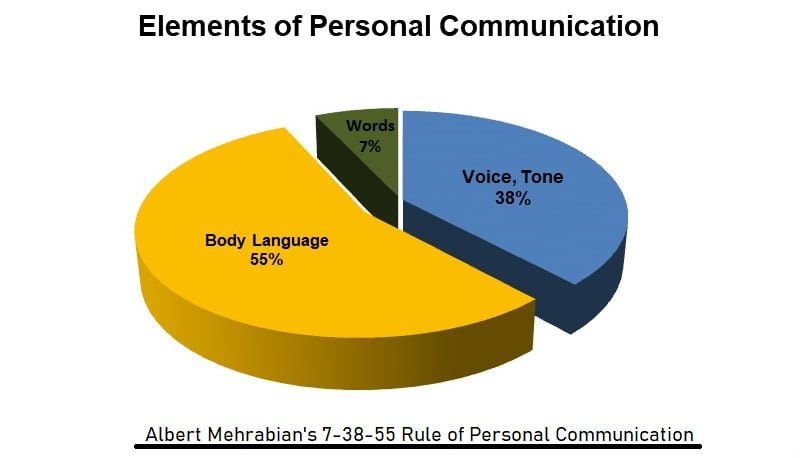How to Read Body Language | 6 Ways to Read Nonverbal Cues
Body language encompasses all the conscious and unconscious signals of the body that give information about the emotional state or the intentions of a person.
Did you know that 55% of the message we want to convey is achieved through nonverbal gestures and postures?
So, it is important that you recognize the signals that the body gives when starting a conversation to be able to discern when they tell you the truth or not, and also to know what the other person is feeling.
The following list of Body Language and its impressions on people will allow you to know the meaning of different postures, and change some gestures to generate a better impression of others. Know the meaning of the positions in a conversation to be able to discern when they tell you the truth or not, as well as identify some emotions.
All non-verbal expressions of gestures, facial expressions, body posture, and movement are included here. Body language is a very powerful tool for nonverbal communication. Here’s a complete article on the Importance of Body Language in Communication.
Pie Diagram on Body Language in Nonverbal Communication:

Psychology of 6 Body Language Posters:
In this article, we are going to explore 6 body posters that express the Body language signs in a conversation.
1. Lots of Eye Contact:
Most of the time, eye contact is considered good to generate a good impression on the audience especially when you’re leading a presentation or when you are sitting in an interview. But in a general case, if a person looks at you for a long time, he may be lying to you. Oddly enough, some people stare at you, sometimes without blinking, in order to avoid feeling fake, causing you to feel uncomfortable.
2. Power Poses:
Power poses are the poses that show leadership characteristics in a person. According to Professor Amy Joy Casselberry Cuddy (an American social psychologist, author, and speaker), this type of posture increases testosterone and confidence. If a person leans back, walks with determination, and clasps hands with fingertips, etc.; by adopting such type of posture you might feel empowered and demonstrate leadership.

3. Crossed Legs:
Sitting with crossed legs is not appreciated and doesn’t consider positive body language for a person. Crossed legs tend to uneasiness and tightness. This action turns out to be a bad sign when it comes to trading. On a psychological level, crossing the legs means that the person remains emotionally and physically closed, so there may be difficulties in negotiating and reaching an agreement.
4. Arms Crossed:
Arms crossed are also one of the easily noticeable uneasy positions of a person. Depending on the context, this can be a defensive stance. It reflects that the person does not want to talk and is uncomfortable with the conversation.
5. Open Palms:
Open Palms shows that a person is comfortable during the conversation and his body language is in full support. When the palms of the hands are open and facing the interlocutor, it represents honesty, loyalty, and submission. Such a type of conversation goes longer and can produce lovable results from a conversation.

6. Imitation of Body Language:
Imitation of nonverbal communication in a conversation is considered a positive sign of healthy communication. The Imitation of body language means that the conversation is going very well and that there is probably a connection between them and they can reach an agreement. Imitating someone is called the Chameleon Effect. This psychological phenomenon of body language describes our natural tendency to imitate others’ speech patterns and physical gestures.
So, What would you like to say about the Psychology of Body Language?
You might also like:
12 Tips to Be a Better Version of Yourself:
The 7 Rules of Life for a Successful and Happier Life.
Effective Communication is Crucial for a Healthy Relationship.
